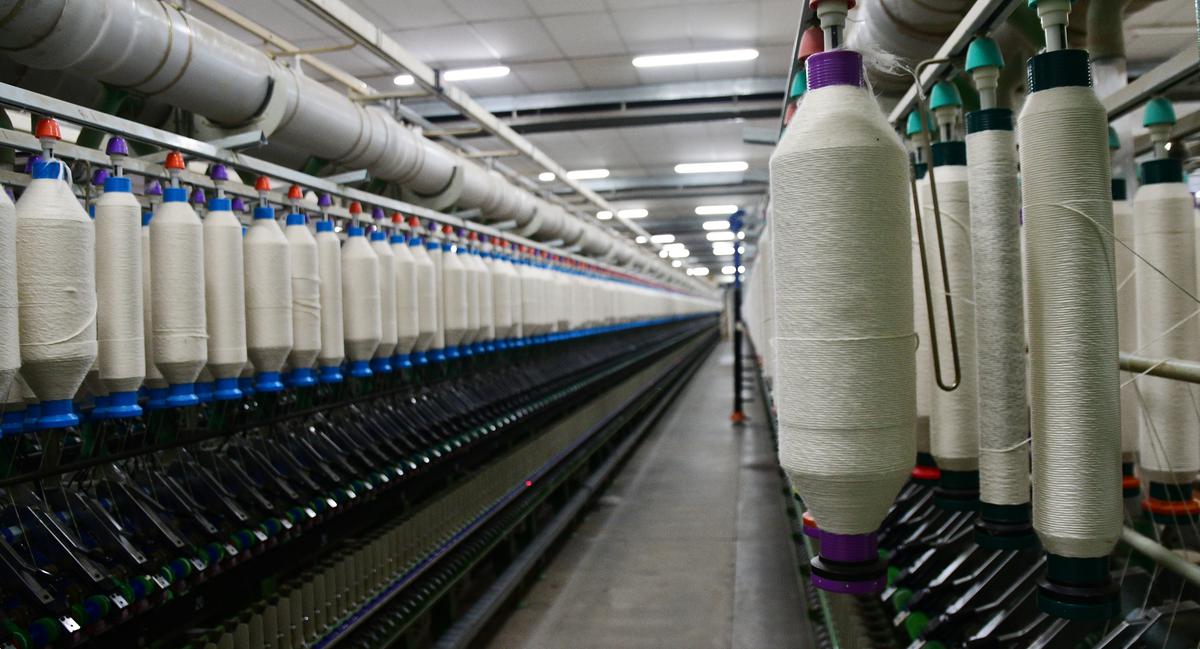High cotton prices cripple production in textile mills
28 August, 2022

Sekar (name changed), who runs a textile mill in Coimbatore district employing 140 workers, operates the unit for the last two months only for five days a week and two shifts a day.
Volatility in prices
With volatility in cotton prices, he started reducing production in April. “On the raw material front, it is difficult to get quality cotton. We sell yarn in powerloom clusters in Maharashtra and there is no price for yarn now. Last month, the loss was ₹ 40 for a kg of yarn. Today, it is ₹ 20 to ₹ 30 a kg,” he says. With less work, several workers have returned to their home town and he has just 60 to 70 workers at the 14,500 spindle mill. “We are told that cotton prices would be affordable by October-end when the new cotton season would have started. But, who knows how the situation would be then,” he says.
Difficult situation
According to Paneerselvam (name changed), who operates a 10,000 spindle textile mill in Tiruppur district, most of the mills in and around Udumalpet have reduced production 30 % to 40 % as it is not viable to run the units. “Even with a cut in production and yarn sold at a loss, the market is not supportive,” he says. He reduced production by bringing down the number of shifts. “We can buy imported cotton. But, the prices are too high for small or medium-scale mills. We are struggling to manage. Those who are financially sound are able to run the mills. For the others, it is a difficult situation,” he says.
“How can an industry run if raw material prices are not stable. If the mills increase the yarn price, its buyers - garment and weaving units - will be hit. So, the raw material and product prices are not in the control of the mills,” he points out.
Coimbatore and Tiruppur districts have over 1,000 textile mills, employing nearly 2.5 lakh workers. Fluctuating cotton prices for the last seven months have hit the mills hard coupled with lack of demand for yarn.
Ravi Sam, chairman of Southern India Mills’ Association, says the mills are operating at just about 60 % capacity and yarn exports have declined. Cotton shortage is pushing prices up. Textile mills that consumed almost 28 lakh bales of cotton a month on an average have reduced it to 17 lakh bales. “Commodity exchange MCX is spoiling the market. When the country had surplus cotton there were no problems. Now, with cotton shortage, speculation in the commodity exchange is hitting cotton consumers,” he alleges.
Cost competitiveness
Cotton prices in China or Pakistan is at about ₹ 65,000 a candy as against almost ₹ 1 lakh a candy in India. So, cost competitiveness of Indian textile industry is hit, say mill owners.
Export of surplus cotton
According to N. Pradeep, vice president of South India Spinners’ Association, between February and July this year, cotton prices fluctuated between ₹1.15 lakh a candy to ₹ 77,000 and again to almost ₹ 1 lakh a candy of cotton. When cotton prices increase, mill hike the yarn price and the cotton prices fall again. It is very difficult for the mills to plan cotton purchase or fix yarn prices. The government should permit export of only surplus cotton and take corrective measures now to ensure cotton prices are stable next season, which starts in October.
Useful Links:
Source: www.thehindu.com
